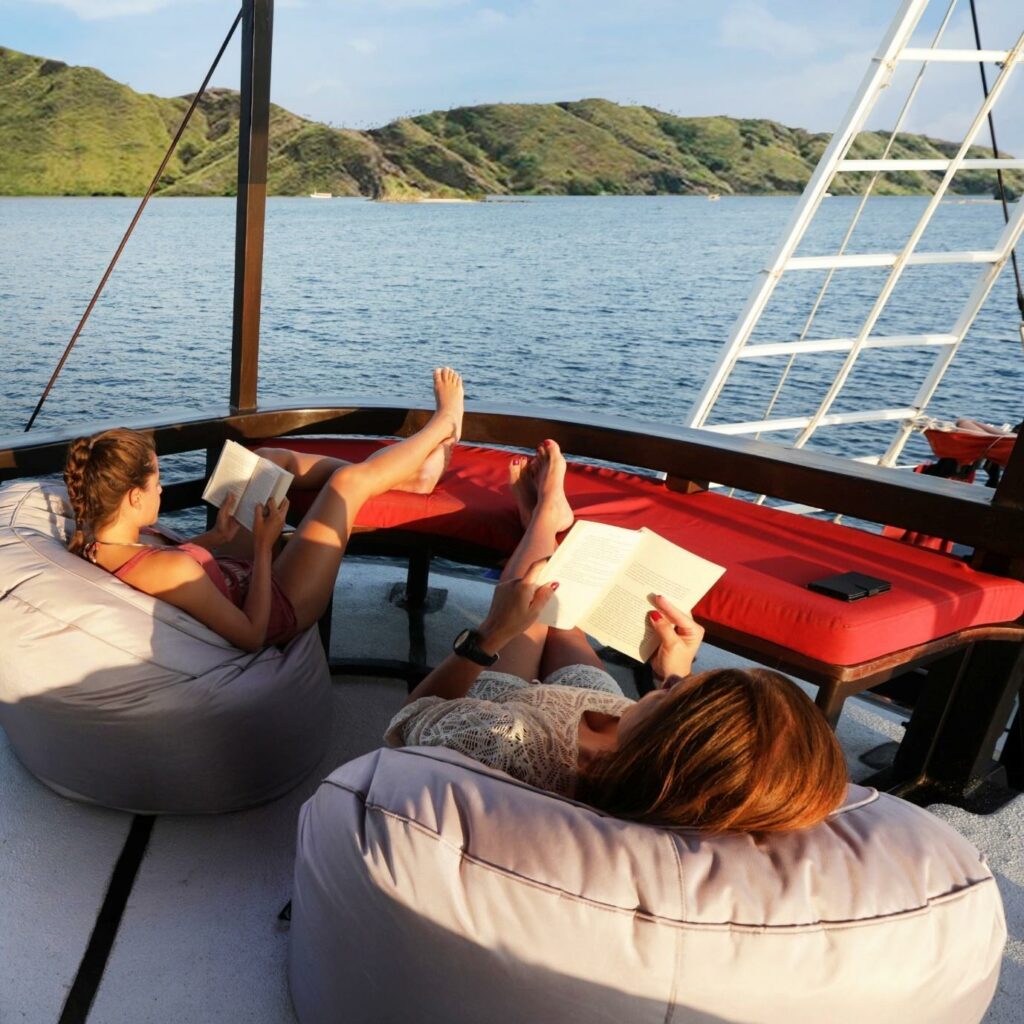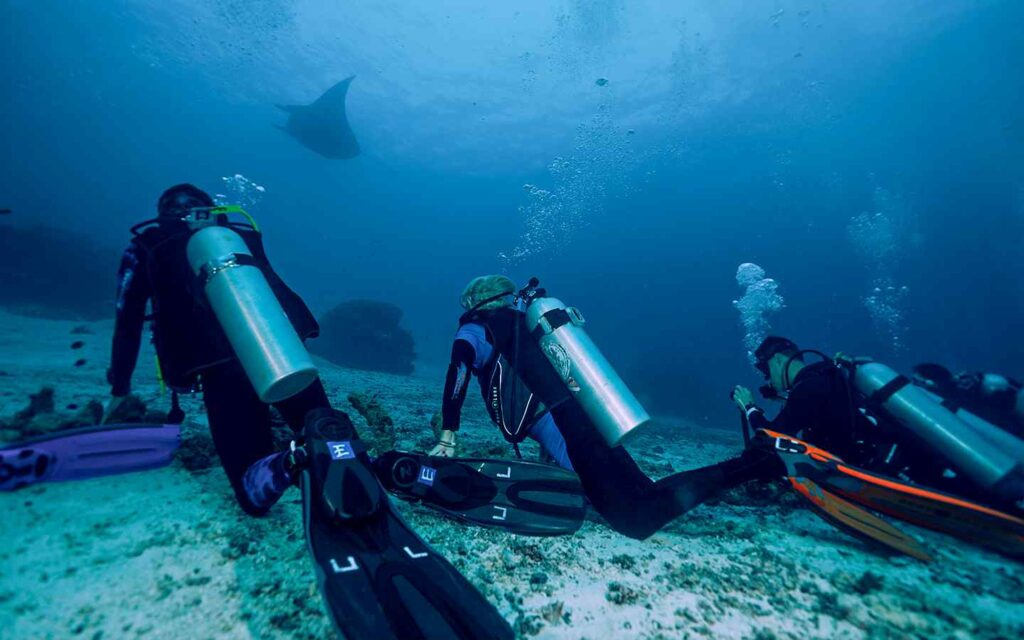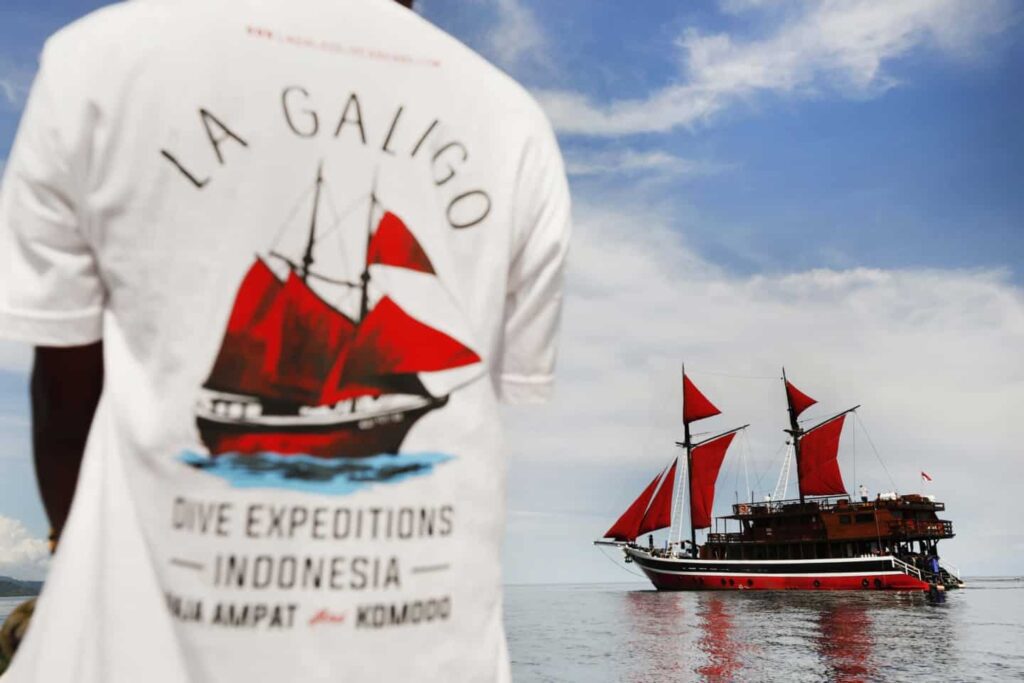8 Tips for Liveaboard Safety You Should Know
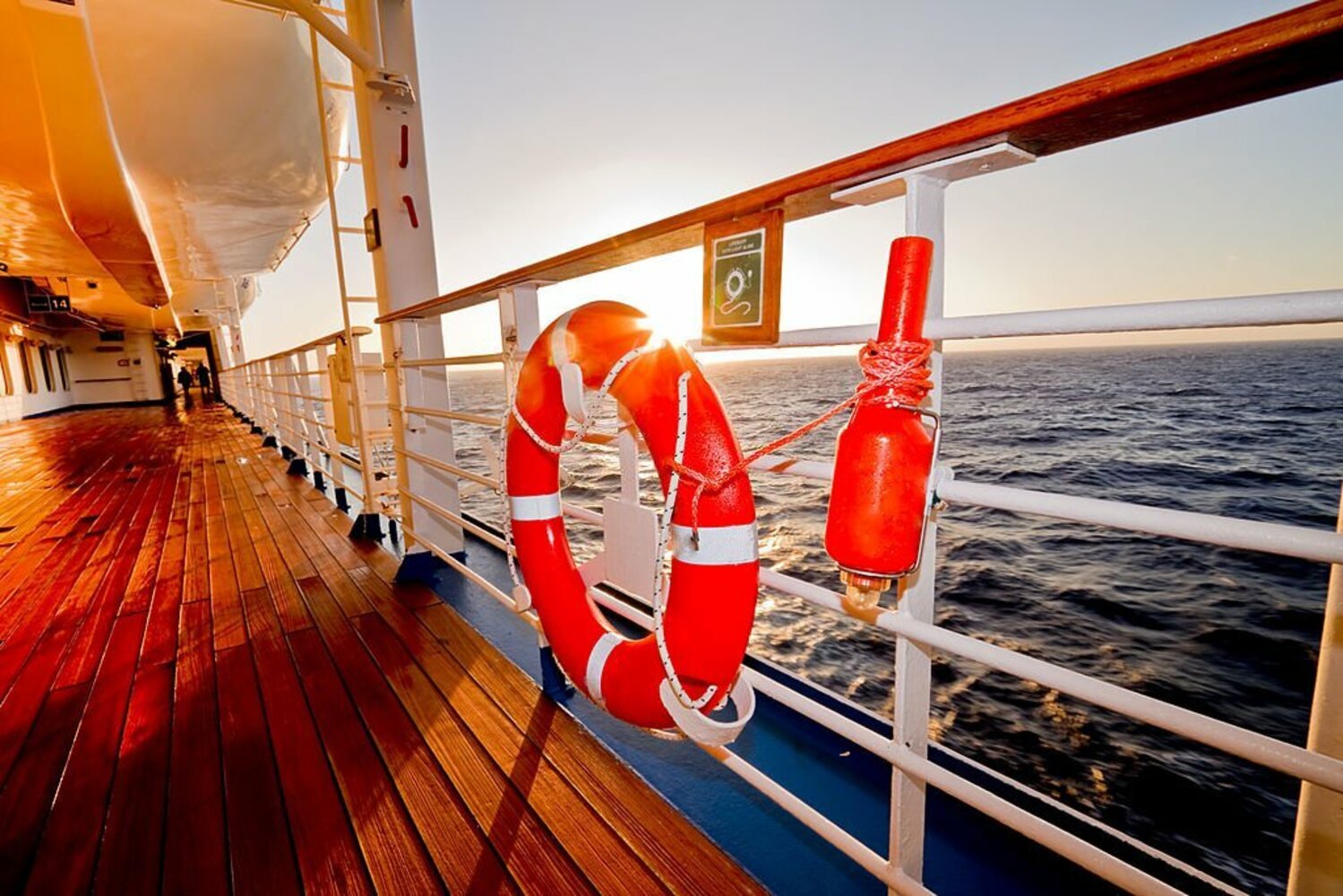
Diving vacations on a liveaboard are fantastic. Eat, dive, sleep, repeat. You easily go to different locations throughout the day after waking up every morning at a new dive spot. And there’s always food available, seemingly endless, and a comfortable place to unwind before your next dive. What could be superior? However, there are some guidelines to follow to make sure your vacation is incident-free, just like when boat and shore diving.
Check out our best tips for scuba liveaboard safety whether you’re planning your next trip or are prepared to set sail. Although heeding these recommendations won’t ensure safety while travelling, they may help lower the risks. We anticipate that by sharing these, divers will feel more confident to inquire about safety on board, which can only increase everyone’s sense of safety in the diving industry!
1. Make sure you get Travel Insurance and Dive Insurance
We frequently discuss the value of having travel insurance to protect you from unintentional non dive related injuries, damage to equipment, missed flights or cancellations by operators while travelling, in addition to scuba diving insurance. We suggest carefully reviewing your travel insurance.
Be very careful when selecting your travel insurance. Depending on the insurance provider, travel insurance for liveaboards may need to be customised. Ensure your provider covers emergency evacuation. The remote areas that liveaboards visit would often require a helicopter flying at low altitude for a DCS evacuation and without insurance you could end up paying $30,000 for a one way trip.
If you are qualified, some companies will pay for you to dive down to 30 metres. If there is a problem with the boat, many diving insurance companies won’t cover you. Often, their insurance covers diving accidents specifically, and only some cover the emergency evacuation portion of the diving accident.
2. Ask questions before you book
Booking your trip in advance is the first step to taking responsibility for your safety on board a liveaboard. We advise you to talk to your booking agent about safety precautions. This is the advice:
What steps do agents take to verify that the businesses they list and collaborate with are honourable, safe, and professional if you choose to use their services? Ask the liveaboard company the same questions you would if you were making a direct reservation.
What guarantees do they have regarding the following?
- Are the local boating authorities certifying the vessel you will be riding on as safe for its intended use?
- Who owns the boat company? Check them out online.
- Have any of their boats or dive safaris ever been involved in any incidents before?
- Has the boat’s insurance company conducted an annual independent third party marine survey for safety and boat condition?
3. Find out more about crew training
When the improbable event happens, the crew and guides should be adequately trained to handle any emergency. This training, which should cover man overboard procedures, fire fighting, first aid, and resuscitation, should be updated on an annual basis.
Recommends asking the following questions:
- “What emergency and safety training are the crew and dive guides equipped with?”
- “What credentials do all of the dive guides possess?”
- “Is a sufficient first aid kit with an AED and oxygen on board?”
- “How many dive guides and crew members are trained in first aid?”
4. Get acquainted with the boat
In addition to paying close attention to the safety instructions given, it’s a good idea to spend some time familiarising yourself with the safety features. The following advice can be used to monitor liveaboard scuba diver safety.
Become familiar with the layout and focus on the little things
- Door opening direction: inward or outward?
- Is the furniture correctly anchored?
- Does the stairwell feature a railing?
- Is there a way to smash windows or glass doors in an emergency or do they have easy opening latches?
- Does emergency exit lighting exist?
- Do you find the equipment storage and dive deck layout satisfactory for trip hazards?
Go through a few “what if” situations. If the boat capsized, how would you get out of your cabin or onto the lounge deck? Though it might seem bleak, it might just save your life.
5. Be mindful of the safety instructions
When an airline gives a safety briefing, not many of us pay as much attention as we ought to. But how would that work on a liveaboard? You should pay close attention to this!
“The guides on board should provide a safety briefing, sometimes known as a muster drill, either right after the anchor has been hoisted, or right before.” The guest’s knowledge of where to locate and how to put on a life jacket is the primary objective.
You should be aware of the meeting place (muster point), the emergency exits, and how to jump overboard in addition to knowing where to gather after the briefing. This is for the improbable scenario in which abandoning ship is decided upon due to an emergency. In order for you as a guest to assist in aiding others, it is also important to discuss the man-overboard procedure.
6. Take a look at the safety gear
A liveaboard carries more than just diving gear. There should be an adequately stocked medical box that is open to everyone, as well as an adequate supply of emergency oxygen, including the necessary regulators.”
You should also consider the following:
- On the exterior of the boat, life rings with a lengthy line
- Sealed life rafts that are still in the testing phase
- Every room has fire sensors and alarms.
- Signs for emergency exits
- Extinguishers for fire in every area
- A hose for fast attack fire water on the deck
- Manually activating fire alarms
- CCTV (for personnel to monitor for fire)
- An alarm that activates when submerged and transmits a satellite distress signal (an EPIRB, akin to a PLB)
- A phone with satellite service
This is not a comprehensive list, and liveaboards may have some combination of these safety features.
7. If you're unsure, speak up
Remember, it’s critical to voice your concerns if you think something is off. Keep an eye out for any possible problems or issues, and let the crew or the captain know about anything that concerns you. Never be afraid to ask questions or to speak up, but make sure you are satisfied with the responses you receive.
8. Ensure your own safety
Although the majority of this advice relates to the boat, there are a few other precautions you can take to ensure your safety. Think about enrolling in a rescue course that covers resuscitation, oxygen supply, and first aid. You will gain more knowledge even if you never use the skills, so that can only be beneficial!
Enjoy a Diving Trip in Raja Ampat and Komodo with La Galigo Liveaboard
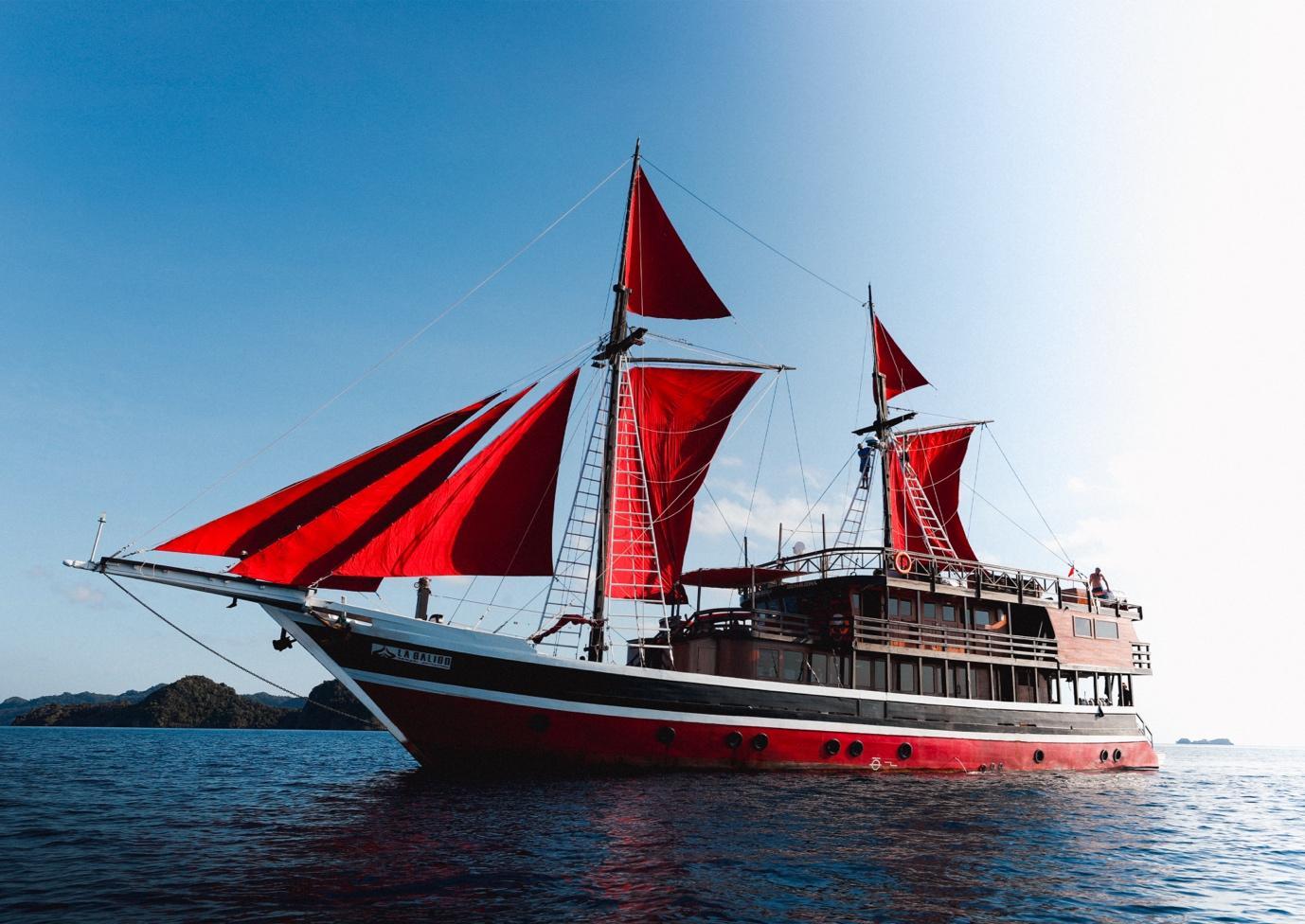
La Galigo is known as one of the best liveaboard diving boats in Raja Ampat Indonesia, and it offers trips to well-known diving destinations such as Komodo and Raja Ampat. The Coral Triangle is located in Indonesia, which has the highest marine biodiversity on the planet.
La Galigo Liveaboard Diving was founded in 2015 by two avid divers who wanted to explore some of Indonesia’s pristine reefs but found that all existing scuba diving options were frequently out of their budget, and wanted to provide an affordable option for everyone to be able to explore these beautiful places.
La Galigo Liveaboard Diving in Raja Ampat & Komodo is a friends and family affair, and our liveaboard diving trips are always focused on fun, safety, guest comfortability, and are exceptional value for money. Our trip prices range from $2,160 for a six-day Komodo liveaboard diving trip to $3,375 for an eight-day Raja Ampat liveaboard diving trip. The price includes four meals a day, diving three to four times a day or snorkelling, and land tours.


